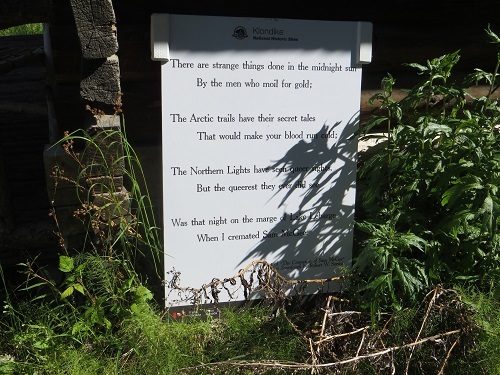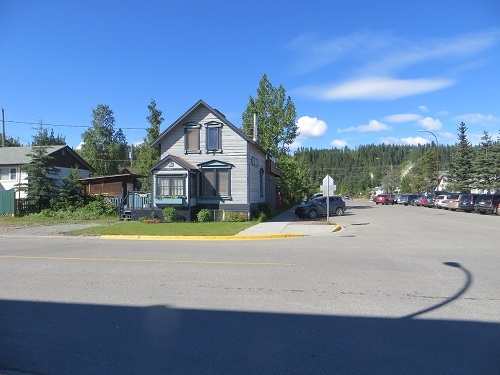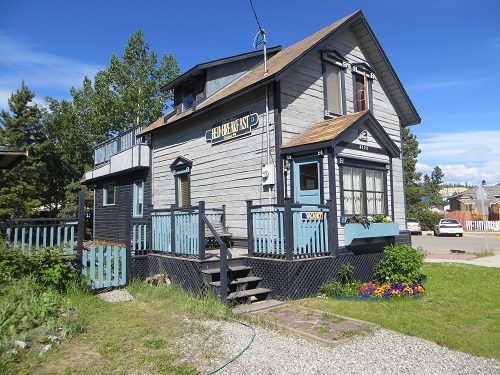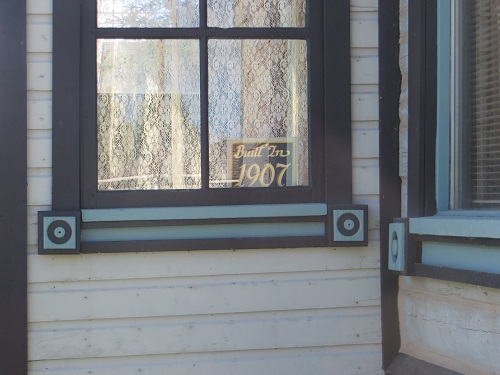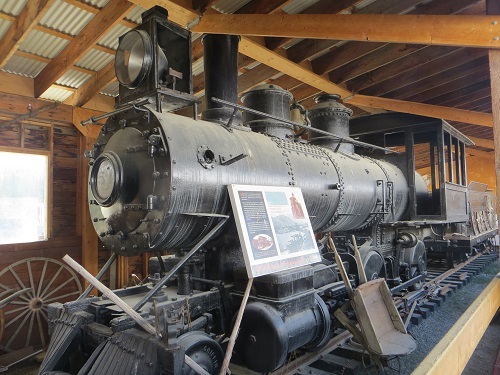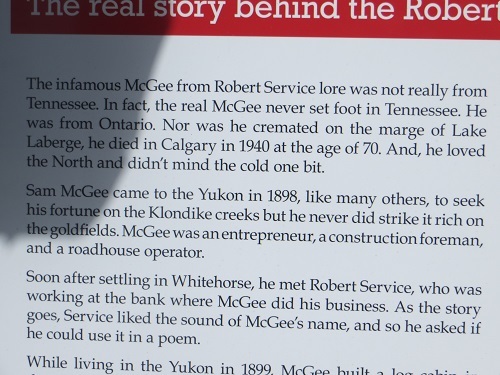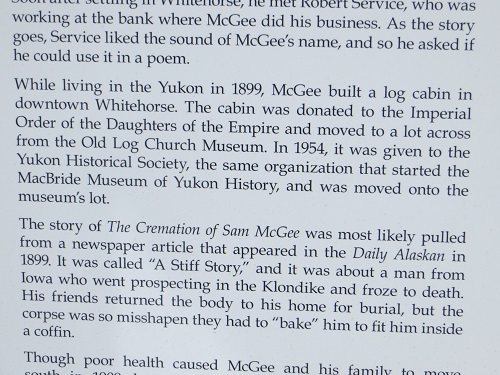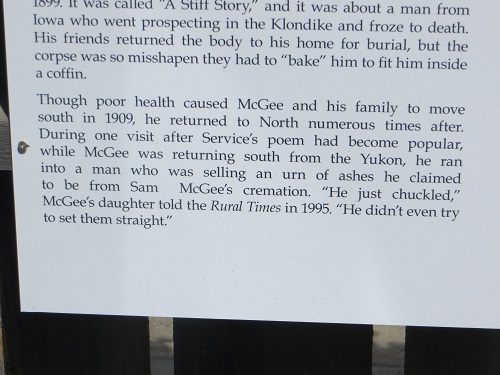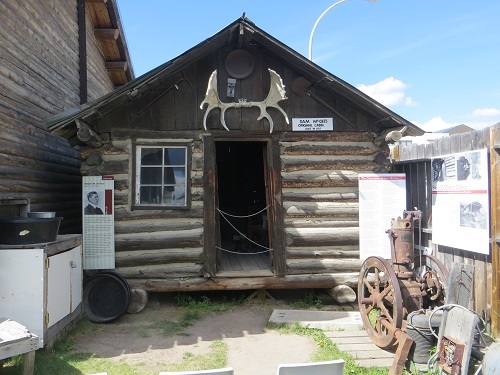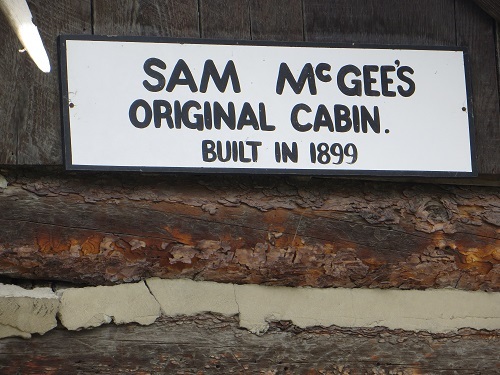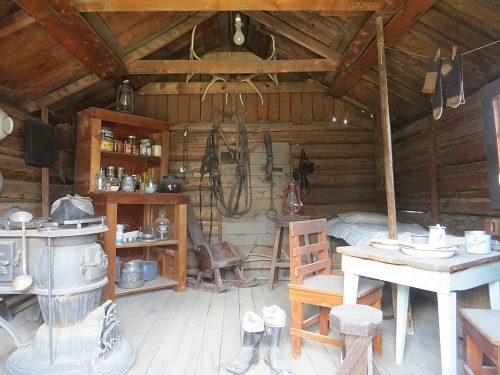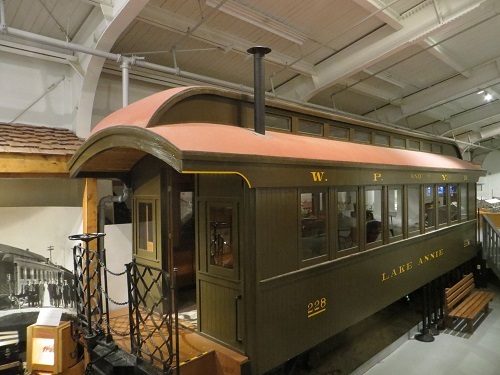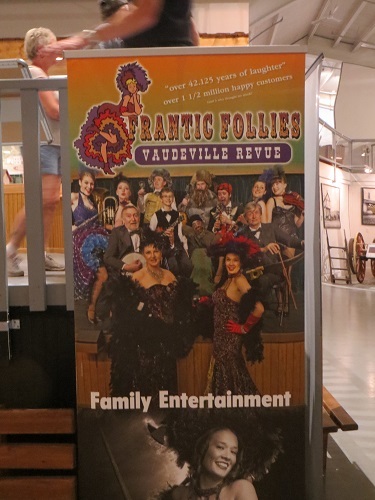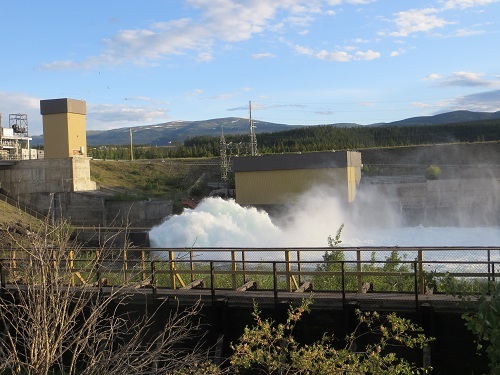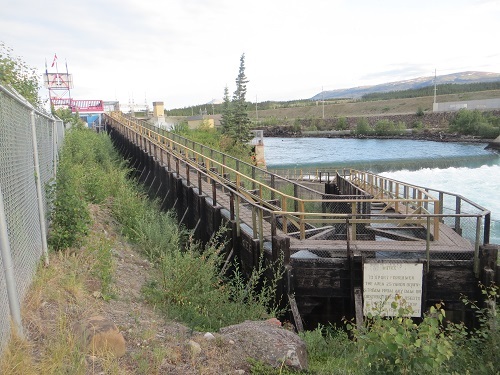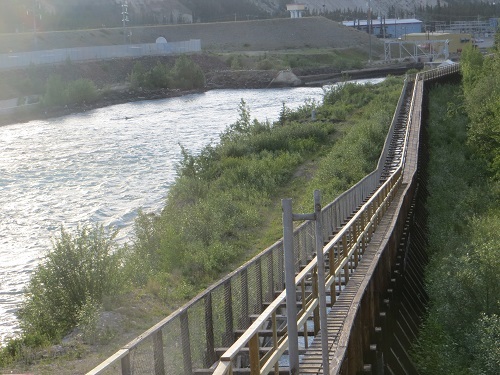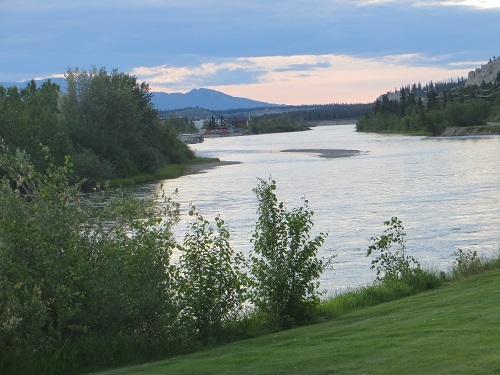There are strange things done in the midnight sun
By the men who moil for gold;
The Arctic trails have their secret tales
That would make your blood run cold;
The Northern Lights have seen queer sights,
But the queerest they ever did see
Was that night on the marge of Lake Lebarge
When I cremated Sam McGee.
Thus begins and ends what is arguably Robert Service's most famous poem, The Cremation of Sam McGee, in which the Bard of the Yukon sings of a gold rush prospector of the late 1890s who freezes to death on the lake's shore and of his buddy's endeavor to honour his wish to cremate him.
And if you want to know the true tale of the real Sam there's no better place than the remote Yukon Territorial capital of Whitehorse.
Just a few blocks up from the Yukon River waterfront, by Wood Street and 5th Avenue, is the house built for the aforesaid Mr. McGee in 1907, in which he lived for two years. It's now listed as a historic building and serves as a B&B.
Sam McGee's house
But more interestingly, you might ask: if Sam was cremated at the height of the gold rush and sainted Bob published his poem in 1907, how could Sam still be living at Wood and 5th two years later?
Well, it transpires that our Bard of the Yukon first saw the name Sam McGee on a receipt when he was working as a bank teller in Whitehorse, fell in love with it, and asked the worthy Sam if he could use it in a poem. 'Yes, of course,' quothed worthy Sam.
Round about the same time, Bob heard the story of a Dawson miner who cremated his dead pal. The two clicked sonorously together in Bob's bardic mind and thus was born The Cremation of Sam McGee.
Lake Lebarge stands in for the real Lake Laberge, just north of Whitehorse, Bob himself never reached Dawson until 1908, and the real Sam lived on and on, dying at the relatively ripe old age of 72.
He was not from Plumtree, Tennessee, either, as Bob sings. Plumtree's not even in Tennessee, it's on the other side of the state line in North Carolina. He was born William Samuel McGee in 1868, in Lindsay, Ontario, and died in Beiseker, Alberta in 1940.
So he neither died of cold and illness nor was he cremated on a lake bank prior to 1907. He was a road builder who also tried his hand at gold prospecting in the Yukon. In 1930, he returned to the Yukon and tried some more gold digging - unsuccessfully.
But he successfully witnessed hucksters selling urns of his own cremated ashes in Whitehorse. Roll up, roll up, get Sam McGee's genuine ashes here! Such urns were being snapped up by tourists like hot cakes including, according to some reports, by real Sam himself.
The life of the real Sam McGee
You can even see real Sam's original cabin from 1899. It's been reassembled at the nearby MacBride Museum of Yukon History, which also has an impressive display of the animals of the region, a mock-up of the trading posts, transport and Mounties buildings of the gold rush era, with many newspaper and other accounts, and a most informative film.
The real Sam McGee's cabin
The museum also lovingly houses one of the dresses - red velvet roses on black - of Bombay Peggy, a gold-rush era floozie who has now donated her name to a Dawson City hostelry tarted up like a Victorian brothel.
For a remote place Yukon also has some other pretty neat museums. There's the Yukon Beringia Interpretive Centre, which tells the geological and fauna tale of the land bridge that linked Alaska to Siberia in the ice age, the Yukon Transportation Museum with its history of the gold rush days, and the Kwanlin Dün Cultural Centre, devoted to the region's original inhabitants.
Gold rush transport
Dün means people, and Kwanlin 'water running through canyon,' an ideal salmon fishing spot. But the construction of a hydroelectric dam on Miles Canyon on the Yukon just above Whitehorse in 1958 did away with the rapids of the 'water running through canyon' bit, with the expected disastrous impact on the traditional, millennia-old salmon runs upon which Kwanlin Dün depended.
To offset this, a wooden fish ladder, claimed to be the longest in the world, has been built alongside the crashing spray of the dam's outlet to allow fish to pass round the barriers by leaping up a series of low steps, apparently mimicking the natural rapids, to the waters on the other side.
Thus it is hoped that the salmon, who have already journeyed well over 1,500 miles up the Yukon from its mouth in the Bering Sea to their spawning waters, will be conned by the ladder to continue doing the same. Underwater cameras have been installed to monitor the salmon's pooling below the ladder. A salmon transplant system is also being used to try to maintain stocks.
But it's apparently not the same thing for the local First Nation people - and another loss of their traditional way of life and culture, without something else fully taking its place, with disastrous effects.
A large proportion of the drunks you see weaving round town or lying prostrate are Frist Nation. Canada's earlier treatment of its original inhabitants was appalling, with children forcibly removed from their parents at age five and being schooled in residential institutions where they were forbidden to speak their own language and beaten for infractions.
So without trying to justify the drunkenness, actions do have consequences. As Chief Mathieya Alatini of the Kluane First Nation told a magazine: 'If you can imagine being taken away from your parents at five years old and being raised by nuns who really don't give a shit about you and abuse you...'
[Upcoming blog on Sunday: Gorgeous Kluane National Park with Canada's highest peak and your neighbourhood 'friendly' grizzlies]
______________
By the same author: Bussing The Amazon: On The Road With The Accidental Journalist, available with free excerpts on Kindle and in print version on Amazon.
